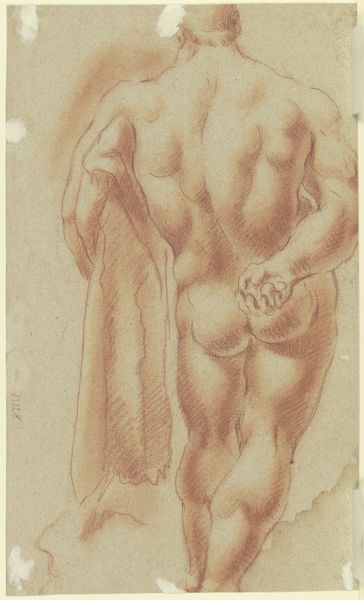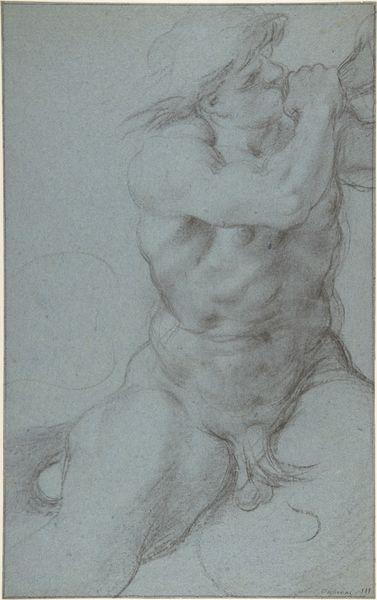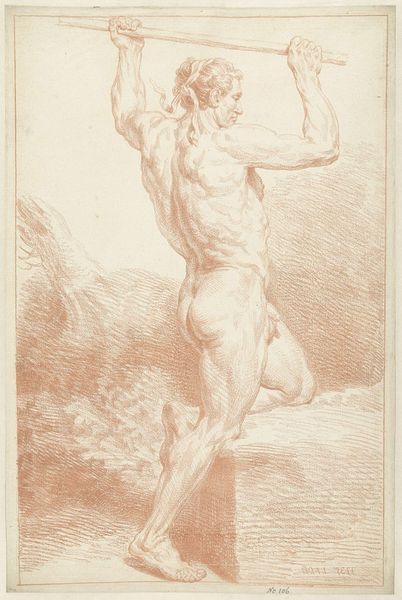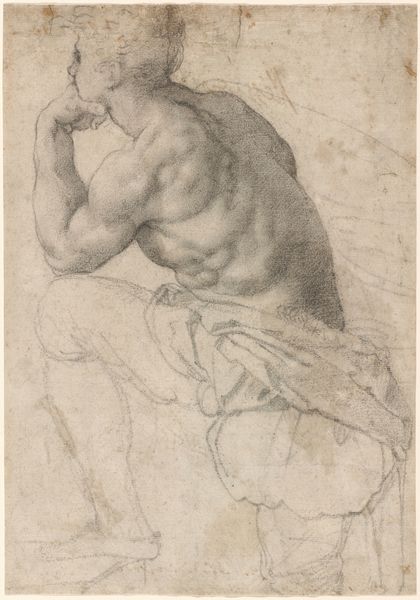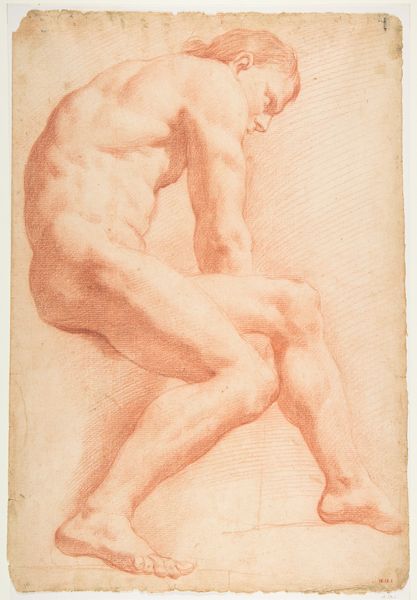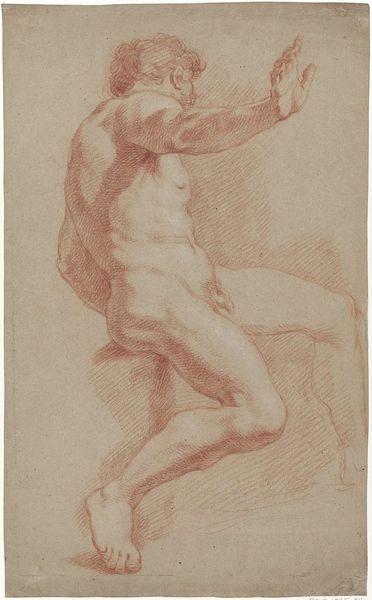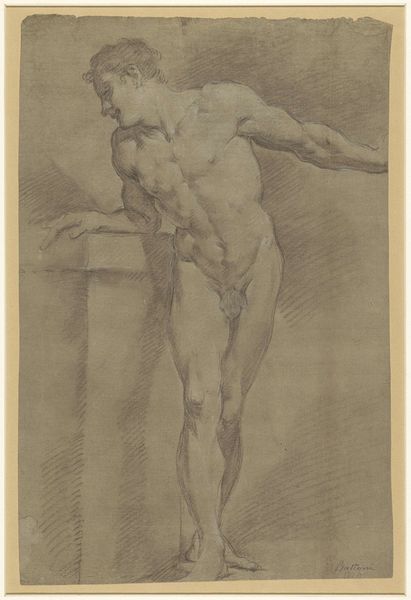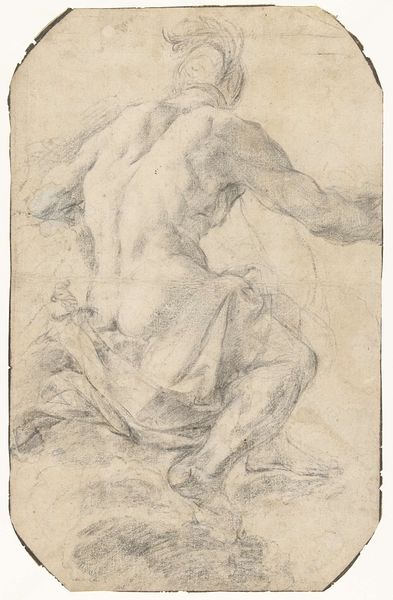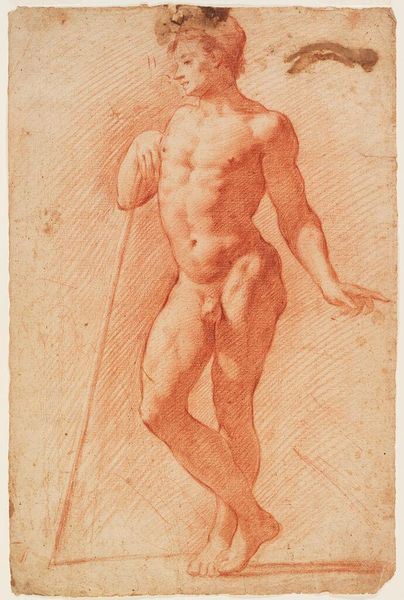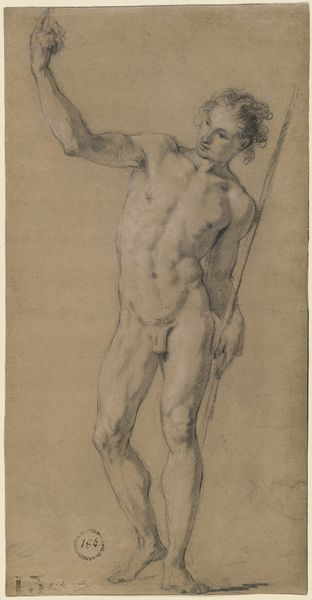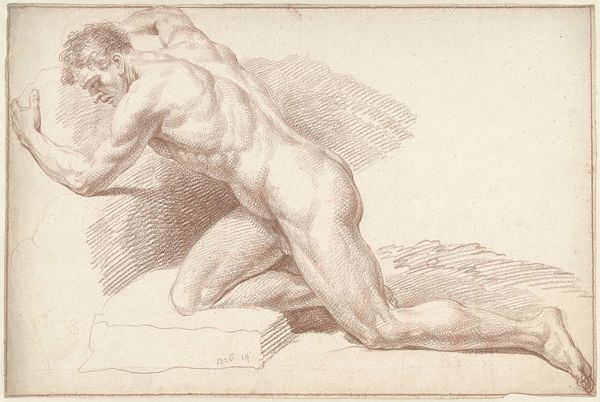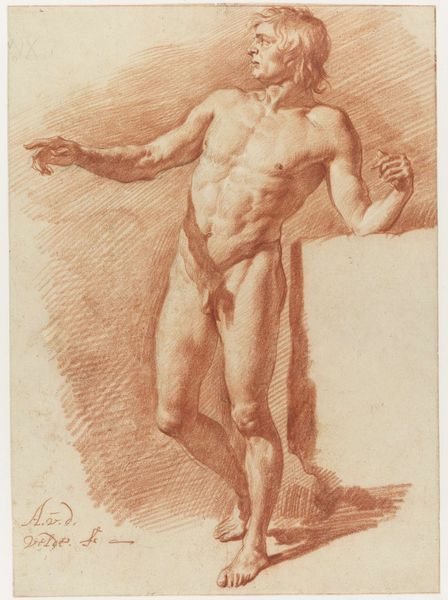
drawing, pencil, charcoal
#
drawing
#
toned paper
#
pencil sketch
#
classical-realism
#
charcoal drawing
#
figuration
#
charcoal art
#
pencil drawing
#
pencil
#
charcoal
#
history-painting
#
academic-art
#
italian-renaissance
#
nude
Dimensions: height 263 mm, width 164 mm
Copyright: Rijks Museum: Open Domain
Curator: Good morning. Before us is "Naaktstudie van een zittende man, op de rug gezien"— a study of a seated nude man, seen from the back. Attributed to Annibale Carracci, and created sometime between 1570 and 1609, this drawing utilizes pencil and charcoal on toned paper. Editor: Well, hello there, muscle man! My first thought? It’s quite powerful, this back. Vulnerable and strong at the same time. It's like he's holding his breath, poised. And that use of reddish chalk or maybe even sanguine gives the drawing an incredible warmth. Curator: Indeed. The interplay of light and shadow—achieved through hatching and varied pressure—really defines the musculature, doesn’t it? Carracci's use of the toned paper is critical here too; the mid-tone allows him to build both highlights and deep shadows with just pencil and charcoal. He has clearly studied human anatomy very closely. We should recall that drawings such as this would have served as important studies for larger compositions. Editor: Absolutely! He really captures the weight and texture of the human form! The drawing's composition seems almost sculptural, like the subject could walk right off the page! Yet, I get a distinct impression of the momentary. You can almost sense the movement that he may make, preparing to move. Perhaps he will move, and we won’t know where he has gone. It feels very present, if you catch my drift. Curator: Your sense of the "momentary" is very astute. Carracci, known for his synthesis of Renaissance and Baroque elements, would have understood the importance of imbuing his figures with dynamic potential. Look at how the line defining the arm becomes fainter and almost wispy—that subtlety is intentional. Also, he doesn’t shy away from portraying a certain realism—the folds and weight are portrayed rather frankly in his rendering of the buttocks, for instance. There's almost something democratic in the observation of the man’s body. Editor: Democratic observation, hmm? Interesting angle. Maybe! For me, there's a timeless quality. These techniques speak so loudly in today’s art sphere. Seeing someone using red chalk in their work nowadays makes me imagine art students admiring this same study. I think this would look lovely on any artist’s wall, and the art history background that it boasts is really the cherry on top. Curator: Indeed, it's quite affecting. Carracci captures, so elegantly, not just form, but a sense of humanity. Editor: Exactly! And the drawing has left us both something new to consider in how it works within history, while feeling uniquely intimate.
Comments
No comments
Be the first to comment and join the conversation on the ultimate creative platform.

